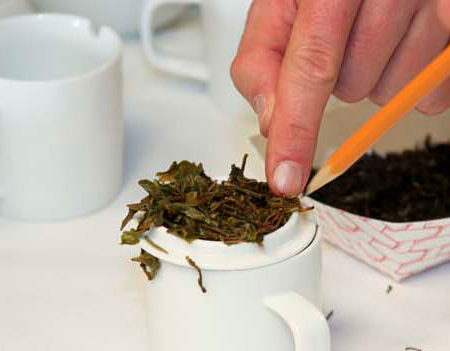 Have you ever wondered how your tea is created? There are variants of tea plants, what truly separates the six types of teas are the means in which they are processed. The scientific classification of teas is actually based upon the process used upon the tea leaves. These classifications were developed in China and continue to be used around the globe today.
Have you ever wondered how your tea is created? There are variants of tea plants, what truly separates the six types of teas are the means in which they are processed. The scientific classification of teas is actually based upon the process used upon the tea leaves. These classifications were developed in China and continue to be used around the globe today.
Six Types of Tea From One Plant
From a single tea plant, it is possible to create six types of tea: black tea, green tea, white tea, yellow tea, oolong tea and even fermented teas.
What Are the Processing Methods That Determine Classification?
Up to seven procedures are used to process the newly picked tea leaves. The inclusion or exclusion of any of these processes changes the classification of the tea. Each process is completed in a controlled environment to avoid spoilage due to changing temperatures or humidity.
Process 1: Withering
Withering is the wilting of the freshly picked green tea leaves. Withering reduces the moisture in the leaves and causes the flavor coumpounds to start developing. Done outdoors or indoors depending on the picking climate, the freshly picked leaves are placed in special troughs that allow hot air to be forced through them. During the withering process, teas lose about 30% of their moisture content making the leaf appear limp. This process causes the flavors and caffeine levels to increase. Similar to coffee roasting, a short wither leaves the grassy overtones in the tea life while a long wither makes flavors more intense and dark.
Process 2: Fixing
Fixing the tea (sometimes called “kill-green”) is the process of browning of the wilted leaves through the application of heat. The longer a tea is fixed, , the more aromatic it becomes. Fixing differs from withering in that it is done through pan firing or steaming. A steamed heat increases leaves/ temperature more quickly that pan firing. Steamed teas taste more ‘green’ and vegetable like. Pan-fired tease are often described as tasting toasty. This procedure is carried out to create yellow teas and green teas.
Process 3: Oxidation
Oxidation is the process of exposing the tea to oxygen which causes the compounds within the leaf to undergo a chemical reaction. The “briskness” and “brightness” of the tea (theraflavin) and “depth” and “fullness” (thearubigin ) are accomplished in this process.
In order to highlight specific intensities, tea makers control the amount of oxidation to which the leaves are exposed. This process is performed in a large room where the leaves are spread out on long shelves and left to ferment for a fixed period of time. The environment remains at a humidity remains at 60-70% and the temperature is maintained at 77-86º F.
As oxidation occurs, the leaves are transformed to exhibit an aroma and taste profile completely different from the leaves that do not exposed this process.. A partially-oxidized leaf has a brown color and produces yellow-amber liquor. In a fully oxidized tea, amino acids and lipids break down completely, turning the leaves more black. The flavors in such a tea are more brisk and strong.
Process 4: Rolling
This is the shaping process of the leaves. Depending on the final flavor desire, the leaves are rolled to become shaped either as wiry, kneaded, or as tightly rolled pellets. This more than an appearance, for during rolling the tea’s sap and essential oils are pressed out, intensifying the flavor. A tightly rolled leaf retains its freshness longer.
Process 5: Drying
In order to keep the tea from increasing its moisture content, the leaves are dried at various points during their production. This process enhances a tea’s flavors and creates a longer shelf-life. Drying is done by roasted the tea at a low temperature at exacting times. This is most often completed in a special tea oven. Care is involved because when the leaves are dried too quickly, the tea can turn harsh and abrasive.
Process 5: Aging
Some teas are also allowed to aging and ferment to a greater degree to make them more palatable. Chinese Pu-erh, are often aged and fermented for years, much like wine.
So there you have it. The six processes that can be applied to a tea over its life to create the variants of delicious teas you’ll find in our store.